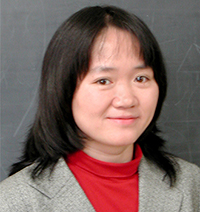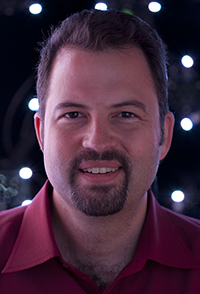EI 2019 Plenary Speakers
JAN 14 MONDAY PLENARY: Autonomous Driving Technology and the OrCam MyEye
Speaker: Professor Amnon Shashua, President & CEO, Mobileye, an Intel Company, Senior Vice President, Intel Corporation (United States)
2:00 – 3:00 PM
 The field of transportation is undergoing a seismic change with the coming introduction of autonomous driving. The technologies required to enable computer driven cars involves the latest cutting edge artificial intelligence algorithms along three major thrusts: Sensing, Planning and Mapping. Prof. Shashua will describe the challenges and the kind of computer vision and machine learning algorithms involved, but will do that through the perspective of Mobileye’s activity in this domain. He will then describe how OrCam leverages computer vision, situation awareness and language processing to enable Blind and Visually impaired to interact with the world through a miniature wearable device.
The field of transportation is undergoing a seismic change with the coming introduction of autonomous driving. The technologies required to enable computer driven cars involves the latest cutting edge artificial intelligence algorithms along three major thrusts: Sensing, Planning and Mapping. Prof. Shashua will describe the challenges and the kind of computer vision and machine learning algorithms involved, but will do that through the perspective of Mobileye’s activity in this domain. He will then describe how OrCam leverages computer vision, situation awareness and language processing to enable Blind and Visually impaired to interact with the world through a miniature wearable device.
Prof. Amnon Shashua holds the Sachs chair in computer science at the Hebrew University of Jerusalem. His field of expertise is computer vision and machine learning. Amnon has founded three startups in the computer vision and machine learning fields. In 1995 he founded CogniTens that specializes in the area of industrial metrology and is today a division of the Swedish Corporation Hexagon. In 1999 he cofounded Mobileye with his partner Ziv Aviram. Mobileye develops system-on-chips and computer vision algorithms for driving assistance systems and is developing a platform for autonomous driving to be launched in 2021. Today, approximately 32 million cars rely on Mobileye technology to make their vehicles safer to drive. In August 2014, Mobileye claimed the title for largest Israeli IPO ever, by raising $1B at a market cap of $5.3B. In August 2017, Mobileye became an Intel company in the largest Israeli acquisition deal ever of $15.3B. Today, Prof. Shashua is the President & CEO of Mobileye and a Senior Vice President of Intel Corporation. In 2010 Amnon co-founded OrCam which harnesses computer vision and artificial intelligence to assist people who are visually impaired or blind.
...learn more...
JAN 15 TUESDAY PLENARY: The Quest for Vision Comfort: Head-Mounted Light Field Displays for Virtual and Augmented Reality
Speaker: Dr. Hong Hua, Professor of Optical Sciences, University of Arizona (United States)
2:00 – 3:00 PM Dr. Hong Hua will discuss the high promises and the tremendous progress made recently toward the development of head-mounted displays (HMD) for both virtual and augmented reality displays, developing HMDs that offer uncompromised optical pathways to both digital and physical worlds without encumbrance and discomfort confronts many grand challenges, both from technological perspectives and human factors. She will particularly focus on the recent progress, challenges and opportunities for developing head-mounted light field displays (LF-HMD), which are capable of rendering true 3D synthetic scenes with proper focus cues to stimulate natural eye accommodation responses and address the well-known vergence-accommodation conflict in conventional stereoscopic displays.
Dr. Hong Hua will discuss the high promises and the tremendous progress made recently toward the development of head-mounted displays (HMD) for both virtual and augmented reality displays, developing HMDs that offer uncompromised optical pathways to both digital and physical worlds without encumbrance and discomfort confronts many grand challenges, both from technological perspectives and human factors. She will particularly focus on the recent progress, challenges and opportunities for developing head-mounted light field displays (LF-HMD), which are capable of rendering true 3D synthetic scenes with proper focus cues to stimulate natural eye accommodation responses and address the well-known vergence-accommodation conflict in conventional stereoscopic displays.
Dr. Hong Hua is a Professor of Optical Sciences at the University of Arizona. With over 25 years of experience, Dr. Hua is widely recognized through academia and industry as an expert in wearable display technologies and optical imaging and engineering in general. Dr. Hua’s current research focuses on optical technologies enabling advanced 3D displays, especially head-mounted display technologies for virtual reality and augmented reality applications, and microscopic and endoscopic imaging systems for medicine. Dr. Hua has published over 200 technical papers and filed a total of 23 patent applications in her specialty fields, and delivered numerous keynote addresses and invited talks at major conferences and events worldwide. She is an SPIE Fellow and OSA senior member. She was a recipient of NSF Career Award in 2006 and honored as UA Researchers @ Lead Edge in 2010. Dr. Hua and her students shared a total of 8 “Best Paper” awards in various IEEE, SPIE and SID conferences. Dr. Hua received her Ph.D. degree in Optical Engineering from the Beijing Institute of Technology in China in 1999. Prior to joining the UA faculty in 2003, Dr. Hua was an Assistant Professor with the University of Hawaii at Manoa in 2003, was a Beckman Research Fellow at the Beckman Institute of University of Illinois at Urbana-Champaign between 1999 and 2002, and was a post-doc at the University of Central Florida in 1999. ...learn more...
JAN 16 WEDNESDAY PLENARY: Light Fields and Light Stages for Photoreal Movies, Games, and Virtual Reality
Speaker: Dr. Paul Debevec, Senior Scientist, Google (United States)
2:00 – 3:00 PM Debevec will discuss the technology and production processes behind "Welcome to Light Fields", the first downloadable virtual reality experience based on light field capture techniques which allow the visual appearance of an explorable volume of space to be recorded and reprojected photorealistically in VR enabling full 6DOF head movement. The lightfields technique differs from conventional approaches such as 3D modelling and photogrammetry. Debevec will discuss the theory and application of the technique.
Debevec will discuss the technology and production processes behind "Welcome to Light Fields", the first downloadable virtual reality experience based on light field capture techniques which allow the visual appearance of an explorable volume of space to be recorded and reprojected photorealistically in VR enabling full 6DOF head movement. The lightfields technique differs from conventional approaches such as 3D modelling and photogrammetry. Debevec will discuss the theory and application of the technique.
Debevec will also discuss the Light Stage computational illumination and facial scanning systems which use geodesic spheres of inward-pointing LED lights as have been used to create digital actor effects in movies such as Avatar, Benjamin Button, and Gravity, and have recently been used to create photoreal digital actors based on real people in movies such as Furious 7, Blade Runner: 2049, and Ready Player One. The lighting reproduction process of light stages allows omnidirectional lighting environments captured from the real world to be accurately reproduced in a studio, and has recently be extended with multispectral capabilities to enable LED lighting to accurately mimic the color rendition properties of daylight, incandescent, and mixed lighting environments. They have also recently used their full-body light stage in conjunction with natural language processing and automultiscopic video projection to record and project interactive conversations with survivors of the World War II Holocaust.
Paul Debevec is a Senior Scientist at Google VR, a member of GoogleVR’s Daydream team, and Adjunct Research Professor of Computer Science in the Viterbi School of Engineering at the University of Southern California, working within the Vision and Graphics Laboratory at the USC Institute for Creative Technologies.
Debevec's computer graphics research has been recognized with ACM SIGGRAPH's first Significant New Researcher Award in 2001 for "Creative and Innovative Work in the Field of Image-Based Modeling and Rendering", a Scientific and Engineering Academy Award® in 2010 for "the design and engineering of the Light Stage capture devices and the image-based facial rendering system developed for character relighting in motion pictures" with Tim Hawkins, John Monos, and Mark Sagar, and the SMPTE Progress Medal in 2017 in recognition of his achievements and ongoing work in pioneering techniques for illuminating computer-generated objects based on measurement of real-world illumination and their effective commercial application in numerous Hollywood films. In 2014, he was profiled in The New Yorker magazine's "Pixel Perfect: The Scientist Behind the Digital Cloning of Actors" article by Margaret Talbot....learn more...